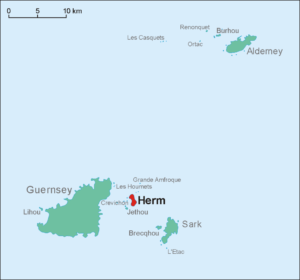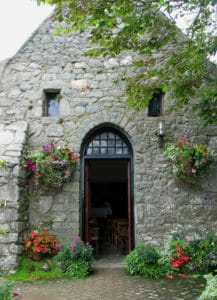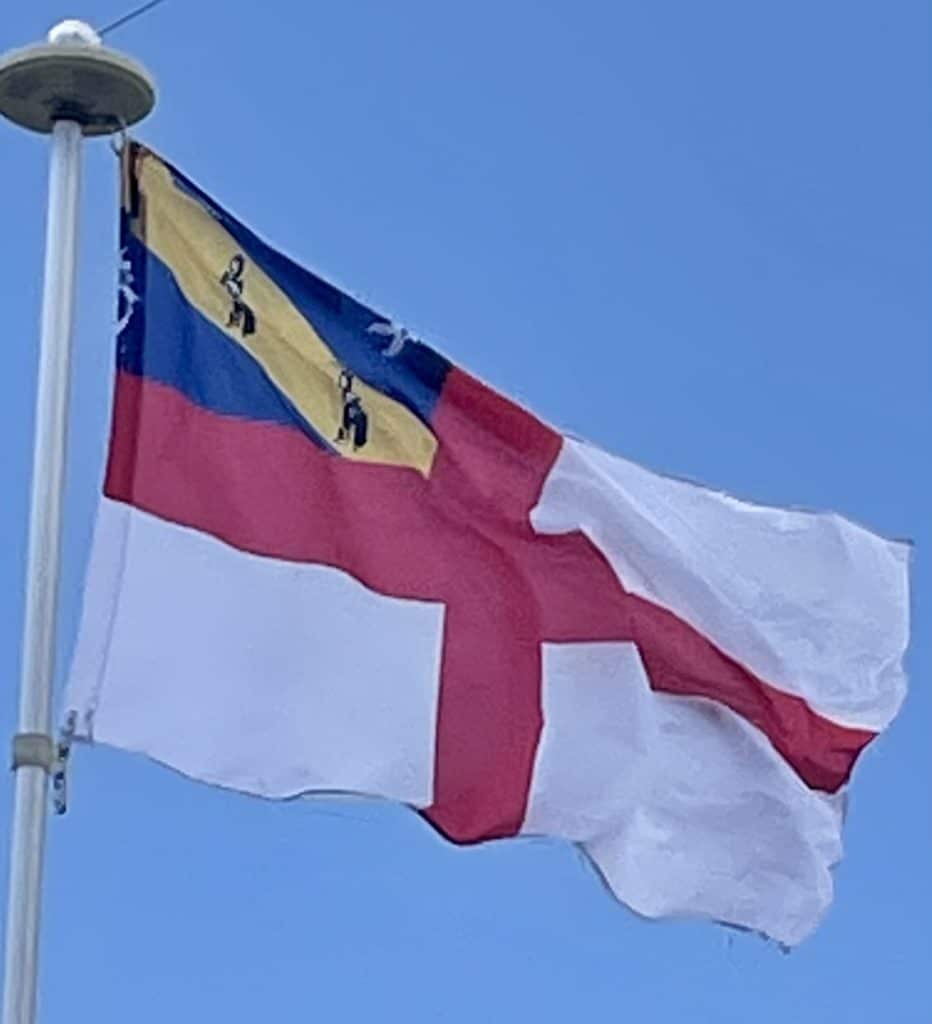Introduction:
Herm is one of the Channel Islands and part of the Parish of St Peter Port in the Bailiwick of Guernsey. It is located in the English Channel, north-west of France and south of England. It is 2.183 km (1.356 mi) long and under 873 meters (2,864 ft) wide; oriented north–south, with several stretches of sand along its northern coast. The much larger island of Guernsey lies to the west, Jersey lies to the south-east, and the smaller island of Jethou is just off the south-west coast.

Herm was first discovered in the Mesolithic period, and the first settlers arrived in the Neolithic and Bronze Ages. Many tombs from that period remain today, the majority in the north of the island. The island was annexed to the Duchy of Normandy in 933, but returned to the English Crown with the division of Normandy in 1204. It was occupied by Germany in the Second World War and the scene of Operation Huckaback, but was largely bypassed. Herm is currently managed by Herm Island Ltd, formed by Starboard Settlement, who acquired Herm in 2008, following fears during the sale of the island that the ‘identity’ of the island was at threat.
Herm’s harbor is on its west coast. There are several buildings of note in the vicinity including the White House, St Tugual’s Chapel, Fisherman’s Cottage, “The Mermaid” pub and restaurant, and a small primary school with about eight children. During a busy summer season up to 100,000 tourists visit the island, arriving by one of the catamaran ferries operated by the Trident Charter Company. Cars are banned from the island, as are bicycles; quad bikes and tractors used for staff and luggage transport respectively are allowed.
History:
Prehistory:
Herm was first found in the Mesolithic period (between 10,000 and 8,000 BC), when hunters were in search of food. In the Neolithic and Bronze Ages, settlers arrived; the remains of chamber tombs have been found on the island, and may be seen today; specifically on the Common, and the Petit and Grand Monceau; it has been suggested that the northern end of the island, i.e. the Common, was set apart for burials. After a three-year project by the University of Durham, supported by specialists from the University of Cambridge, the University of Oxford, and the Guernsey museum, they stated that the “density of tombs suggests that the northern end of Herm may have been a place set apart for funerary activity”.
Middle Ages:
The first records of Herm’s inhabitants in historic times are from the 6th century, when the island became a center of monastic activity; the followers of Saint Tugual (also called Tudwal) arrived, establishing Saint Tugual’s Chapel. In 709, a storm washed away the strip of land which connected the island with Jethou.

An important moment in Herm’s political history was in 933, when the Channel Islands were annexed to the Duchy of Normandy, they remained so until the division of Normandy in 1204, when they became a Crown Dependency. In 1111 Brother Claude Panton was a hermit in “Erm” and in 1117 the then hermit, Brother Francis Franche Montague is recorded as living on “Erm”. After the annexation, Herm gradually lost its monastic inhabitants, and between 1570 and 1737 the governors of Guernsey used it as a hunting ground; visiting to shoot, hunt, and fish.
19th century to the Second World War:
In 1810, an inn was founded; and during the Industrial Revolution, roads, paths, a harbor, accommodation, a forge, blacksmiths, a brewery, a bakery and a prison were built to cater for the largest number of inhabitants since prehistoric times. Most were quarrymen working in new granite quarries. Several quarries can still be seen at present, such as on the Common. When the Prince and Princess Blücher leased the island from the British government during the First World War, he introduced a colony of red-necked wallabies to the island, around 60–70 in number. They increased up to the First World War, after which they decreased in numbers, and the remaining few were re-captured and put in enclosures.


